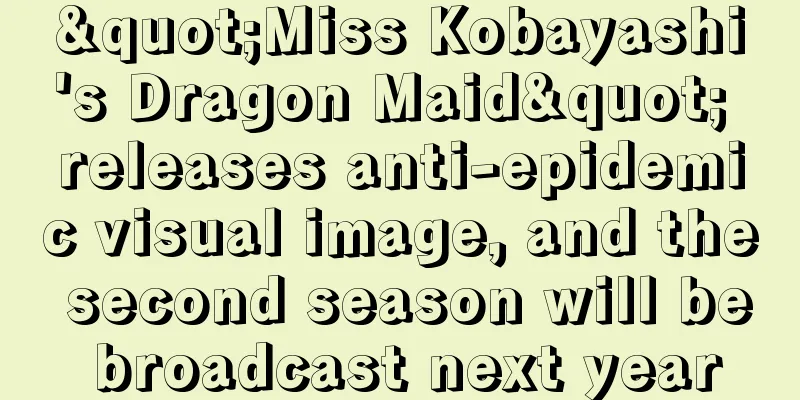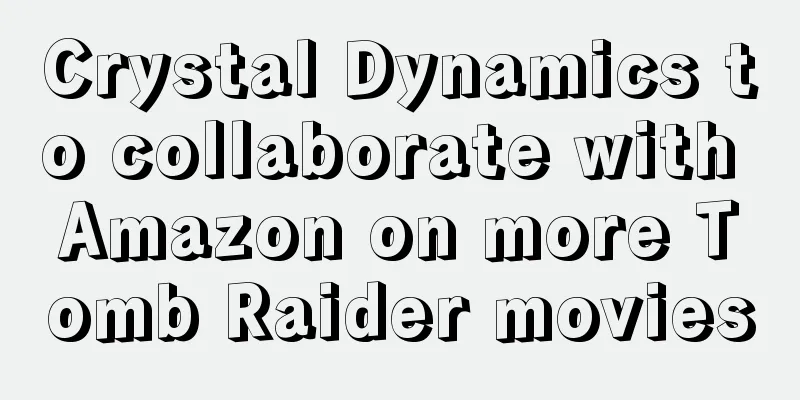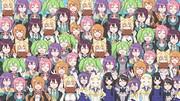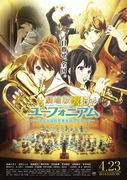Gegege no Kitaro Season 3 Episode 5: Reassessing the charm of the 80s
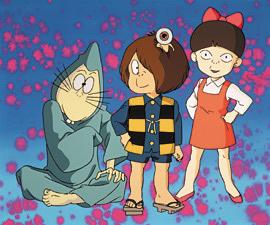
The appeal and evaluation of the third series of GeGeGe no Kitaro (1985-1988)"GeGeGe no Kitaro" is an anime series based on the manga of the same name by Shigeru Mizuki, and the third season, which aired from 1985 to 1988, has been particularly well-received. Compared to other series, this period of "Kitaro" had many episodes that focused on the coexistence and prosperity of humans and monsters, deeply moving viewers. In this article, we will take a closer look at the appeal and evaluation of this third season. Broadcast detailsThe third season of Gegege no Kitaro was broadcast on Fuji TV from October 12, 1985 to February 6, 1988, every Saturday from 6:30 to 7:00 p.m. It was a long-running series with 108 episodes, each 30 minutes long. It was produced by Toei Animation and produced by Fuji TV and Toei Animation (now Toei Animation). storyKitaro, the last boy of the ghost tribe, solves various incidents that occur between human society and monsters with his fellow monsters, and continues to fight for a world where humans and monsters can coexist. In this series, there are many episodes that focus on the coexistence of humans and monsters, and the appearance of Tendo Yumeko, a human girl who is Kitaro's friend, gives a deeper look into the relationship between humans and monsters. CommentaryGegege no Kitaro, based on the original work by Shigeru Mizuki, is the third TV series. The story of Kitaro fighting for the coexistence of humans and monsters left a strong impression on viewers. This series has more episodes themed on the coexistence and prosperity of humans and monsters than the other Kitaro series, and features a human heroine, Tendo Yumeko, as a regular character other than a monster. The show's dynamic action scenes, skillfully combined with comical scenes, were well received by viewers, with some episodes achieving a peak audience rating of nearly 30%, making it the biggest hit of the series. castThe voice actors were Toda Keiko as Kitaro, Tanonaka Isamu as Medama, Toyama Kei as Ratman, Mita Yuko as Nekomusume, Irokawa Kyoko as Tendo Yumeko, Nagai Ichiro as Konakijii, Emori Hiroko as Sand-throwing Granny, Yanami Joji as Ittan Momen, and Yara Yusaku as Nurikabe. These voice actors expressed the individuality of the characters in a rich way, leaving a deep impression on the viewers. Main StaffThe original story was written by Mizuki Shigeru, the planning was done by Shimizu Kenji and Kimura Kyotaro, the music was by Kawasaki Masahiro, the production was done by Matsushita Kenkichi and Kozuka Norio, the character design was Kanemori Yoshinori, the art design was Abe Taizaburo, the series directors were Kasai Osamu and Shibata Hiroki, and the producer was Yokoyama Kenji. In addition, the staff of each department, including filming, editing, effects, recording, music selection, publicity, and development, worked together to support this work. The opening theme song was "GeGeGe no Kitaro" (lyrics by Mizuki Shigeru, music by Izumi Taku, arrangement by Nomura Yutaka, sung by Yoshi Ikuzo), and the ending theme song was "Obake ga Ikuzo" (lyrics and music by Yoshi Ikuzo, arrangement by Nomura Yutaka, sung by Yoshi Ikuzo). These songs were also important elements that enhanced the appeal of the work. Main CharactersKitaro is a boy of half ghost and half human, with long hair that hides his left eye, wearing an old school uniform, a yellow and black chanchanko, and geta sandals, giving him a distinctive appearance. He has a strong sense of justice and cannot leave humans or monsters in trouble alone. He can use various magic spells, such as shooting his hair, which is the source of his monster energy, like needles. Eyeball is Kitaro's father, and is commonly known as Eyeball Dad. He has a unique appearance with arms and legs growing from his eyeballs, and has a wealth of knowledge about monsters, and supports Kitaro with appropriate advice when it comes to battles. Nezumi-Otoko is half human and half monster, and looks like a skinny middle-aged man wearing a dirty piece of cloth. He is greedy and very cunning, and although he and Kitaro are old friends, he easily betrays them. Neko-musume is a half-monster who looks like a human girl, and when he gets excited, his eyes shine, his teeth become sharp, and he takes on the appearance of a cat. She likes Kitaro and tries to be of help to him, but her fighting ability is not very high. Tendo Yumeko is a human girl who was saved by Kitaro when she was targeted by a monster and became his friend. She has a kind and rational personality. Konakijii is an old man yokai with the appearance of a baby wearing a belly wrap. When he hugs a person or monster, he turns them to stone, increases his weight, and immobilizes them. He is like a guardian to Kitaro. Sunakakeba is a yokai in the form of an old woman wearing Japanese clothing, and uses various magic spells using sand. He is a good partner to Konakijii. Ittanmomen is a flying cloth yokai that appears as a single piece of pure white cloth with hands and narrow eyes, and is useful for moving Kitaro and friends and for aerial combat. subtitleFrom episode 1 to episode 108, various monsters appear and the story unfolds as Kitaro and his friends solve the cases. The subtitles of each episode reflect the monsters and the cases that appear, drawing the viewer's interest. For example, a variety of monsters appear in episodes such as "The Mysterious Monster Castle Appears!!", "The Mirror Old Man", and "The Cat Sage", depicting the exploits of Kitaro and his friends. Related TitlesGeGeGe no Kitaro has been adapted into anime at various times, including in 1968, 1971, 1996, and 2007, and several theatrical versions have also been produced. Other related works include "GeGeGe no Kitaro: Geosagen," "GeGeGe no Kitaro: The Yokai Army," "GeGeGe no Kitaro: Great Yokai War," "GeGeGe no Kitaro: The Strongest Yokai Army! Lands in Japan!!," "GeGeGe no Kitaro: Clash!! The Great Rebellion of the Otherdimensional Yokai," "Hell Chapter," "GeGeGe no Kitaro: Fake Yokai vs. Kitaro: Watch out for counterfeit products!", "GeGeGe no Kitaro: Great Sea Beast," "GeGeGe no Kitaro: Ghost Night Game," "GeGeGe no Kitaro: Yokai Express! The Phantom Train," "GeGeGe no Kitaro: Storm! Yokai Castle," "GeGeGe no Kitaro: Kitaro's Ghost Train," "GeGeGe no Kitaro: Japan Explodes!!," "GeGeGe no Kitaro: Yokai JAPAN Rally 3D," "GeGeGe no Kitaro: Clang-Colon 3D Theater" and "Hakaba no Kitaro." These works also delve deeply into the world of Kitaro and are not to be missed by fans. Evaluation and AppealThe third season of GeGeGe no Kitaro had many episodes themed around the coexistence and prosperity of humans and monsters, deeply moving viewers. In particular, the appearance of Tendo Yumeko deepened the relationship between humans and monsters, eliciting sympathy from viewers. The show also skillfully combined dynamic action scenes with comical scenes, which was well received by viewers, with some episodes achieving a peak viewer rating of nearly 30%, making it the biggest hit of the series. The voice actors' performances also expressed the individuality of the characters in a rich way, leaving a deep impression on viewers. Furthermore, the theme songs "GeGeGe no Kitaro" and "Obake ga Ikuzou" were also important elements that enhanced the appeal of the work. RecommendationThe third season of Gegege no Kitaro has many episodes themed on the coexistence and prosperity of humans and monsters, and is a work that deeply moves viewers. In particular, the appearance of Tendo Yumeko has made the relationship between humans and monsters even more profound, evoking sympathy from viewers. In addition, the dynamic action scenes and comical scenes have been well received by viewers, with some episodes achieving a peak viewership rating of nearly 30%, making it the biggest hit of the series. The voice actors' performances also express the individuality of the characters in a rich way, leaving a deep impression on viewers. In addition, the theme songs "Gegege no Kitaro" and "Obake ga Ikuzou" are also important elements that enhance the appeal of the work. Please watch this work and enjoy the adventures of Kitaro and his friends. |
<<: High School! Kimengumi - Explosive entertainment of youth and laughter
Recommend
The appeal and reviews of "Wagamama Fairy Mirumo de Pon!": A story of a magical world and friendship
Wagamama Fairy Mirumo de Pon! - A story of love a...
Senior animation expert: It's hard to tell why Demon Slayer is so popular
Recently, Japanese media published a new commenta...
Star Trek: The Series' First Live-Action Comedy
A new Star Trek series has been announced, create...
The second chapter of the comic-adapted live-action movie "Hitman Fable" is officially announced and will be released on February 5, 2021
The live-action film "Hitman Fable", ad...
The appeal and reviews of "Traffic Training": A must-see for anime fans?
Traffic training - Koutsukuunren ■ Public Media t...
Rurouni Kenshin Season 2 "Kyoto Turmoil" Releases Newest Trailer
The animation "Rurouni Kenshin" will la...
"Now You See Me 3" starring injured finger not only has magic but also many action scenes
Jesse Eisenberg, who played the protagonist Danny...
Peacemaker Season 1 Finale Sets Viewership Records: Zhao Xi Na Thanks Jason Momoa and Ezra Miller
The first season finale of the "Suicide Squa...
"Ant-Man 3" new trailer released, the villain Kang is coming with great force
Recently, a new trailer for Ant-Man 3 was release...
(Spoiler warning) The first episode of the final season of "Game of Thrones" scored 8 points on IGN, 9.4 on IMDb, and 97% on Rotten Tomatoes
The first episode of the final season of Game of ...
Hold on to this cash cow! Sony says it is discussing making a new Spider-Man TV animation
Sony Interactive Entertainment CEO Kenichiro Yosh...
"One Piece" Sanji's latest statue is unveiled, with excellent workmanship and cool
The popular character of "One Piece", &...
Carmen San Diego: A Must-See Anime Guide
Carmen San Diego - The enchanting red cape and he...
A thorough evaluation of the showdown between DC Superheroes and the Eagle Talon gang! Who will win?
DC Superheroes vs. the Eagle Talon - Movie Review...
A thorough analysis of the appeal of "Passion from the Fingertips 2 - My Lover is a Firefighter"! A love story with a firefighter is a must-see!
A comprehensive review and recommendation of &quo...

